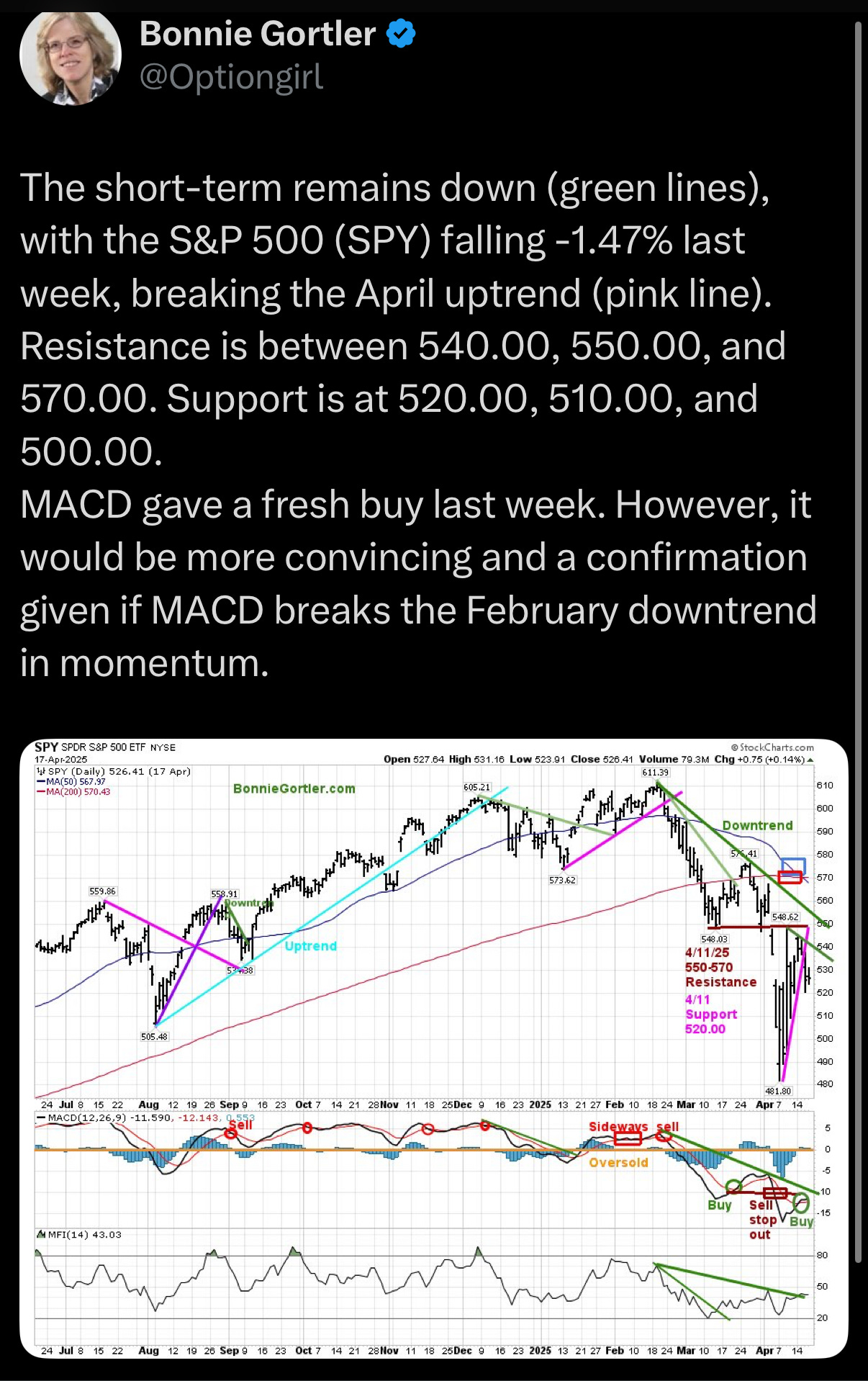The 3-Legged Policy Stool: What Bessent Is Really Signaling to Markets
Unpredictable policy, trade tensions, and political volatility are negatively impacting business confidence and investment but tax cuts and deregulation comes after
Recap
✅ We saw a sizable bounce where SPX tried to retest up towards 5500.
New 52-Week Highs vs New 52-Week Lows
NYSE New 52-Week Highs: 14 vs New 52-Week Lows: 40
Nasdaq New 52-Week Highs: 41 vs New 52-Week Lows: 135
Notice the number of new 52-Week Lows is slowly dropping as the market awaits what’s next
New Highs - New Lows is right around 0 for many of the indices, the market is awaiting what’s next
McClellan Summation Index
It seems like the McClellan Summation Index across indices is trying to recover from recent lows.

*This my personal blog and is not investment advice—I am not a financial advisor but a random person on the internet who does not have a license in finance or securities. This is my personal Substack which consists of opinions and/or general information. I may or may not have positions in any of the stocks mentioned. Don’t listen to anyone online without evaluating and understanding the risks involved and understand that you are responsible for making your own investment decisions.
Uncertainty doesn't just slow growth—it paralyzes it.
The question is how much of this uncertainty is priced into the markets? Are we going lower from here or have we bottomed with the VIX spiking up to 52?
Tariff uncertainty is expected to cause a slowdown in freight volumes and rate fluctuations over the next few months, particularly affecting the US market as international freight slows and domestic freight becomes more integrated with international movements—I do not think the market has priced this in yet. And this will not only be bad news for inflation but also feed the recession and slower-growth narrative.

In Bloomberg’s Here’s Why Podcast episode titled “Here’s Why Uncertainty Is an Economic Killer”, they talk about how extreme policy uncertainty in the US is becoming a critical drag on business decision-making.
Executives like DHL’s CEO Tobias Meyer describe it as “driving through fog without headlights,” as near-daily changes in trade policy and tariffs make it nearly impossible for companies to plan investments, expand operations, or hire confidently. The result is decision paralysis: companies are increasingly hitting the brakes on growth initiatives simply because they don't know what rules or conditions will exist next week.
This is a negative impact on business confidence and investment.
Joe Weisenthal expands on this by distinguishing between typical uncertainty (where the direction of change is known, even if the magnitude isn’t) and the more dangerous kind we're facing now—uncertainty without clear goals or direction. Unlike crises such as the 2008 financial collapse or COVID-19, where policy responses were at least guided by clear objectives (stop a bank run, replace lost income), today’s environment lacks clarity altogether. The Trump administration’s inconsistent messaging, internal policy conflicts, and volatile tariff decisions have created a crisis of uncertainty.
Investors hate uncertainty. This environment is freezing investment and pushing companies into defensive mode. With rising costs from tariffs, tighter financial conditions (e.g., rising bond yields and credit spreads), and weakening economic signals like a cooling housing market, many firms are prioritizing capital preservation over growth. Unlike the post-pandemic labor crunch—when companies hesitated to lay off staff for fear of being short again—today's tone is different. Businesses are increasingly asking what can be cut to survive the next quarter. And while markets may offer marginal signals of stability, the underlying uncertainty remains deep and unresolved.
Posts of Interest on the Market
Economic activity is falling across the board
Below analysis shows the downtrend momentum.
It is likely we have not seen the bottom of this bear market just yet—it’s too soon.
US Manufacturing doesn’t look good either—how much of this is priced into the markets?
Forecast
We’ve re-entered a clear Trader’s Market—a regime where volatility, policy uncertainty, and shifting macro narratives favor short-term opportunism over long-term conviction. In this environment, swing traders are likely to outperform traditional investors, as rapid reversals and headline-driven moves make sustained positioning increasingly difficult. Patience may be punished, while agility is rewarded.
The media headlines are all about tariffs right now—but if you listened carefully to Treasury Secretary Scott Bessent’s Bloomberg interview, the real story is something much broader. What Bessent laid out wasn’t just a defense of the administration’s aggressive trade posture. It was a clear signal that the U.S. economic strategy under Trump is built on a three-legged policy stool: Tariffs, Tax Cuts, and Deregulation.
Each leg is being rolled out on a different timeline—and each has serious implications for how you trade or invest in this market.
Keep reading with a 7-day free trial
Subscribe to Best of Twitter/Threads, Analysis & Forecasts to keep reading this post and get 7 days of free access to the full post archives.













